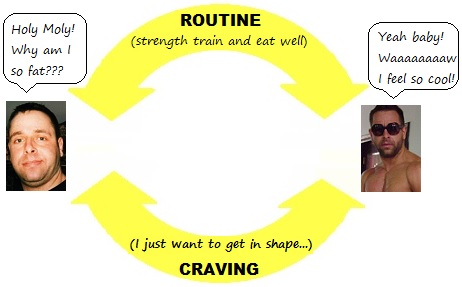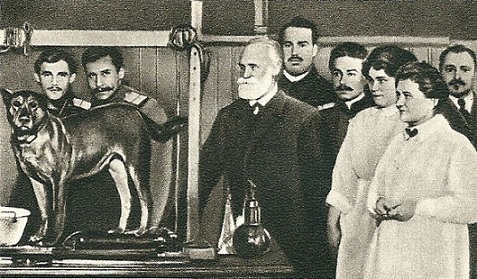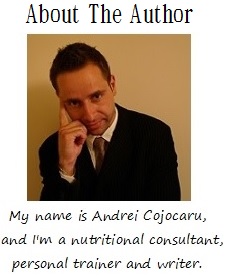How Do You Lose Weight for Good?
How do you lose weight for good? If you want to be in shape for the rest of your life, keep in mind that how you lose weight is far more important than the actual outcome.
Most folks seem not to realize that without a shift in mindset along with a few small but consistent daily behavior changes, their success will be ephemeral.
For them, dieting is about denying themselves of something. Whether is a macronutrient such as carbohydrates or other comfort foods, this spartan regimen is a demoralizing process that cannot be maintained as a regular, long-term commitment.
More than likely, after a short-lived improvement, over 95% of these fitness zealots relapse into their previous eating patterns, regaining all the weight back, which makes us wonder if they should even start dieting. So how do you lose weight then?
This failure occurs because our human nature tends to under-evaluate the future, which would supposedly take care of itself if we satisfy our immediate needs.
Probably for this reason, most diets are based on deprivation, and eventually screw you up.
You will be in a fool's paradise because you only get a temporary tool and not the foundation for a sustainable life style.
Now, as you may know already, changing any ingrained routine is not easy, and requires more than just determination. How many times you've made a New Year's resolution that you disgracefully abandoned by February?
So what makes the difference between successful people and those who fail miserably?
As it turns out, the former have better critical thinking skills, and are more proficient in creating a certain awareness about the workings of their body and mind.
They are more conscious about their weaknesses, and learned how to circumvent them by adjusting their habit loop without denying their cravings. In other words, they understand better what is really important.
Maybe I should say that even the fact that you are wondering “How do you lose weight?” implies that you are not fully aware of this point.
The habit loop process is covered in detail in Charles Duhigg's book “The power of habit”, which is a good read although I was not quite impressed with it.
Essentially, every habit within our brains can be represented as a three step closed circuit: there is always a cue that prompts your brain to start doing the routine which leads to the actual reward.
The cues can be external (a smell or a visual trigger such as cinnamon rolls, a certain place or time of the day, etc) or internal feelings (an emotion of some sort).
The routine depends, of course, on the actual cue: eating a cinnamon roll, having a few drinkings, etc. The end purpose is given by the reward, which can be a physical sensation, an emotional payoff, etc.
Over time, this loop (cue, routine and reward) becomes more and more integrated and automatic, leading eventually to a new habit.
So instead of wondering “How do you lose weight?”, maybe you should think about “How to develop better habits?”.
It's important to note that the whole circuit is fueled by our cravings, and if we can't root them out (and usually we can't, especially when it's about food), the habit will remain dormant, inhibited only by our cognitive effort. So it's really a matter of time until you give up.
You shouldn't buy into the myth of what it takes to achieve your goals. Don't get me wrong, being in shape takes commitment, but if you consciously refrain yourself from doing something again and again, you are likely to end up craving it more and more.
So how do you lose weight while still enjoying plenty of your favorite foods?
Redesigning your habit loop

According to Charles Duhigg, the golden rule of habit change is to keep the same cue, but find a different routine that would give you the same reward – which obviously doesn't always work in real life.
In other words, you would be supposed to satisfy your craving for cinnamon buns by eating, let say, vegetable sticks. Yummy!!! :-(
My point is that in general, the reward is closely related to a specific routine, so the only solution is to change the behavior from its source (adjust the cue that starts it).
By manipulating, and eventually controlling the first links in a chain reaction you can control the whole output.
It's important to note that any new behavior becomes an automatic habit after repeating it about 30 times, so you need some discipline.
However, this initial commitment is the hardest part because you have to cognitively redirect the feelings that trigger your craving. But once you are over it, you can congratulate yourself.
Pavlov's drooling dogs
The idea behind the cues is an old one that comes from a certain Russian scientist and his dogs.
While Ivan Pavlov's main focus was the digestive system, he also became interested in analyzing reflexes when he realized that the dogs used for his experiments were salivating without any food in sight.

It fact, the beasts were associating the lab coats with food, and started drooling whenever a researcher was approaching their cage.
In a subsequent series of experiments, Pavlov used other triggers such as ringing a bell before feeding them, and after a while they responded in the same manner.
As it turns out, the most important component of a habit chain is the perception that triggers it. And whether this perception is generated by a bell or a white miniskirt, you are no different from Pavlov's drooling dogs.
However, unlike some lab subjects, you want to use your own cues, and result with the feelings that will move you to use your habits.
Putting it all together – How do you lose weight for good?
Ok, let's take a look now at the practical value of the above information. It's important to understand that there is no such a thing as good or bad foods; only suitable or unsuitable circumstances for satisfying your cravings.
If you are like most people, your weakness is sugary-fatty-salty food. So what? Personally, I love chocolate cake, and maybe a well done bread pudding. Do you think I don't get any of that while being in an outstanding shape? Of course I do. Why wouldn't I? It taste so...good...
How do you lose weight then? Remember, it's all about calories and circumstances...
That's exactly what you need an hour before your regular training (for a better muscle fiber recruitment), and/or shortly after anyway.
In fact, this is not only a suitable circumstance; it's also the most suitable way to replenish the glycogen stores after a hard workout, so you can kick-start your recovery and adaptation process.
Although the research regarding glycogen depletion during weight training is scarce, some data suggest that a single set at 80% of one RM performed to muscular failure causes about 12% glycogen depletion, while three sets at this intensity results in a 24% reduction.
Assuming that a full body workout would reduce glycogen stores by 20% you would still have enough room for a few portions of pudding.
It should be noted that it would take somewhere between 12 and 16 grams of carbohydrate/kg of lean body mass to restore a complete glycogen depletion.
In other words, if you are an average individual weighting 80kg at 15% body fat, your lean body mass is 68kg, which means that you would need about one kg of carbs.
However, as your full body workout used only 20% of the glycogen, you should divide this figure by 5, which gives you 200g * 4 = 800 calories.
And as a serving of bread pudding has about 180 calories from carbohydrates, you may want to get a bigger plate. Bon appetit!
Conclusion: Nature, to be commanded, must be obeyed
Any move to improve your life should begin with an acceptance of reality as it is. The immediate answer to your question (How do you lose weight?) is rather simple: you eat less.
But this is a superficial solution that will give you only short-lived results.
Any solid change begins with an understanding of your human vulnerabilities, but also your limitless potential.
So remember, your weight loss journey starts with YOU, not with some rules imposed by a self-proclaimed guru who doesn't know shit.
Return from How Do You Lose Weight to Home





